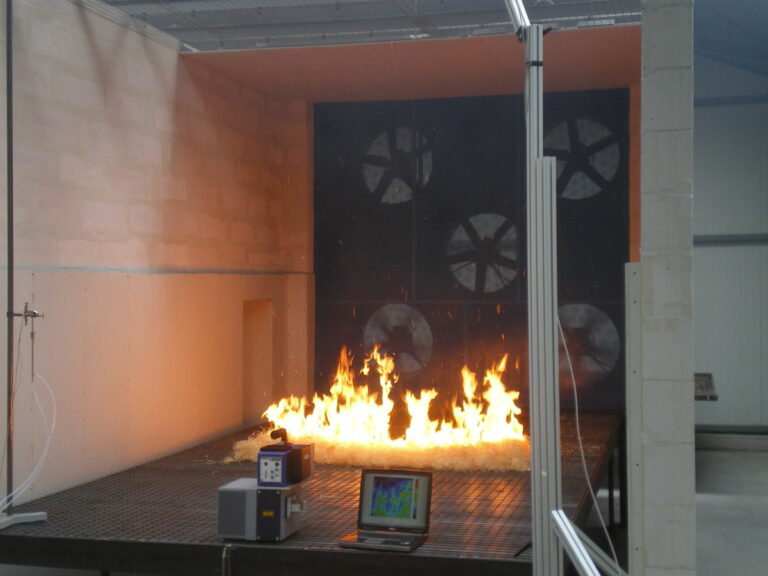Credits : France SIMONET/IRCELYON/CNRS Photothèque
Topic 5 :
Soot and fires
The safety of basic nuclear installations (BNIs) is based on the implementation of static containment means (fire dampers, very high efficiency filters) and dynamic containment (essentially putting the installation under negative pressure using a ventilation network). The objective of these devices is to ensure the containment of radioactive substances within the installation in normal operation as well as in an accident situation. In this context, fire is the most likely industrial risk in an BNI and for several decades various operators (AREVA NC, CEA, EDF) and organisations (IRSN, INERIS, CSTB) have been carrying out studies and research in collaboration with numerous university partners on this subject.

There are, therefore, four main areas of research related to soot in the context of fires. Firstly, the radiative properties of soot are one of the elements that are still unknown to date and that require further investigation. A second unknown is the transport of fire aerosols within the room and the ventilation network. Then, another major axis is the consideration of the complex morphology of these particles within the available theoretical models in order to describe the mechanisms of agglomeration, deposition by diffusion, inertia, turbulence, impaction and thermophoresis. Finally, the last line of research concerns the modelling of the interaction between the ventilation regime and the development of fire in a confined and poorly ventilated environment such as a basic nuclear installation. To this end, tools have been developed within the fire community (Isis, Saturn, Sylvia) but there is a lack of knowledge, both experimental and theoretical, on the impact of particulate emissions on the very high efficiency filtration devices used in these ventilation networks.
To date, it is essential to continue the efforts initiated in recent years to characterise the physico-chemical properties (size, morphology, composition) and clogging power of particles emitted in a fire situation.
